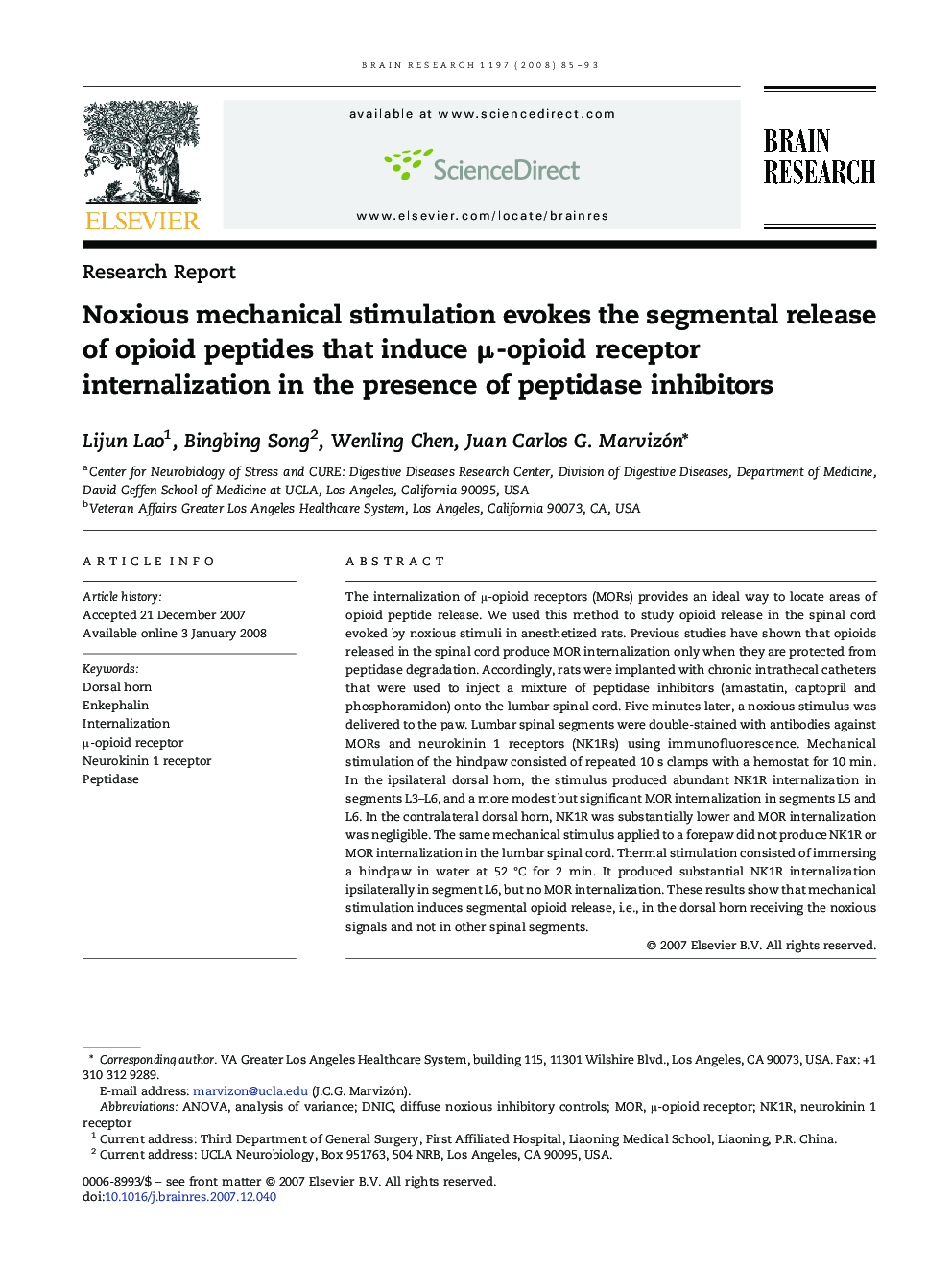| کد مقاله | کد نشریه | سال انتشار | مقاله انگلیسی | نسخه تمام متن |
|---|---|---|---|---|
| 4330053 | 1614242 | 2008 | 9 صفحه PDF | دانلود رایگان |

The internalization of μ-opioid receptors (MORs) provides an ideal way to locate areas of opioid peptide release. We used this method to study opioid release in the spinal cord evoked by noxious stimuli in anesthetized rats. Previous studies have shown that opioids released in the spinal cord produce MOR internalization only when they are protected from peptidase degradation. Accordingly, rats were implanted with chronic intrathecal catheters that were used to inject a mixture of peptidase inhibitors (amastatin, captopril and phosphoramidon) onto the lumbar spinal cord. Five minutes later, a noxious stimulus was delivered to the paw. Lumbar spinal segments were double-stained with antibodies against MORs and neurokinin 1 receptors (NK1Rs) using immunofluorescence. Mechanical stimulation of the hindpaw consisted of repeated 10 s clamps with a hemostat for 10 min. In the ipsilateral dorsal horn, the stimulus produced abundant NK1R internalization in segments L3–L6, and a more modest but significant MOR internalization in segments L5 and L6. In the contralateral dorsal horn, NK1R was substantially lower and MOR internalization was negligible. The same mechanical stimulus applied to a forepaw did not produce NK1R or MOR internalization in the lumbar spinal cord. Thermal stimulation consisted of immersing a hindpaw in water at 52 °C for 2 min. It produced substantial NK1R internalization ipsilaterally in segment L6, but no MOR internalization. These results show that mechanical stimulation induces segmental opioid release, i.e., in the dorsal horn receiving the noxious signals and not in other spinal segments.
Journal: Brain Research - Volume 1197, 4 March 2008, Pages 85–93